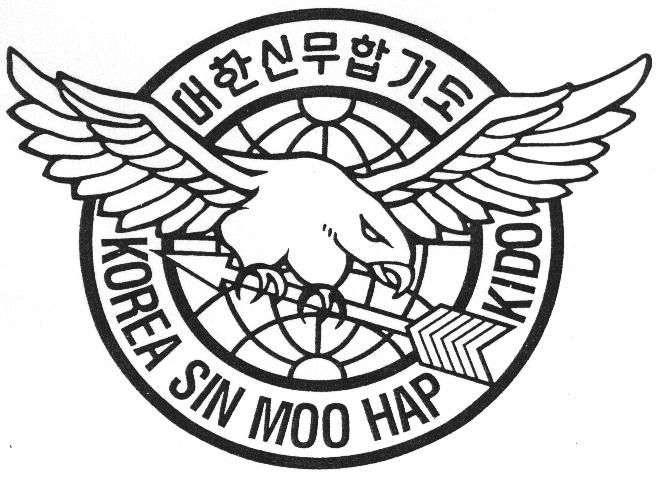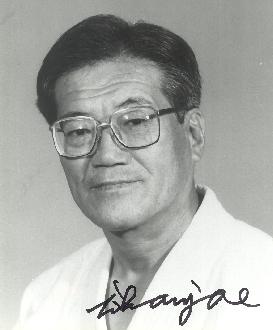


HapKiDo History by Master Lyndon Johnson
Hapkido history can be a very confusing topic because there are many different variations of its history printed in books, on the internet and told by different Hapkido Grandmasters. The difference in the stories come from people seeking political gain, power, money, prestige, national honor and many other factors. In my study of the Hapkido history I have found that dispite the differences in stories told and printed there are several things that are consistent in the majority. Here I will list only the consistent historical items I have found from the printed texts and from interviews with different Hapkido Grandmasters including Ji, Han Jae, Bong Soo Han and others.
1904
Grandmaster Choi, Young was born in the town of Yong Dong , Choong Chung Province , relatively near Taegue , South Korea. At age 7 or 8 he was taken to Japan by a Japanese candy merchant named Mr. Morimoto as his adopted son. Morimoto did not keep him and he eventually came to work for, Sokaku Takeda (1860-1943), the 32nd patriarch of Daito Ryu Aikijitsu. Takeda was about forty-four years old at the time young Choi, around seven-years old, came to his service. Choi was given the Japanese name Yoshida, Asao. The first or given name, Tatjuttsu, that is propagated as being the name Choi used in Japan is not a valid Japanese name.
Choi remained in the employ of Takeda for thirty years until 25 April 1943 when
Takeda died. At that point he took his leave from the house of Takeda and
shortly thereafter returned to the Taegue area of Korea .
There are no records or certificates to document that Choi officially studied under Takeda but he was there for 30 years and he obviously learned some Aikijitsu while there.
Choi's first student was a successful brewery manager named, Suh, Bok Sup. Prior
to his study with Choi he had been awarded a 1st Dan Black Belt in Judo, under
the direction of Korean Judo instructor, Choi, Yong Ho. In February of 1948, the
twenty-four year old Suh witnessed Choi, who was then in his forties, get into a
fight with several men. Choi rapidly devastated his opponents. So impressed with
his technique, Suh summoned Choi to his office and inquired as to his style.
This meeting eventually lead to Suh hiring Choi, who had previously been a poor
rice cake seller and hog farmer since his return to Korea . Choi would teach Suh
for several years privately, eventually also became a bodyguard for Suh's
father, Suh, Dong Jin.
Keep in mind that Choi is still teaching Daito Ryu Aikijitsu.
Choi open his first school of self-defense, which was established in February of 1951. Suh, Dong Jin became his first Black Belt. The initial name of the system of self-defense Choi taught was, Dae Dong Ryu Yu Sool. This is the Korean translation for Daito Ryu Jujitsu.
Grandmaster Ji, Han Jae was born in Andong , Korea in 1936. He was a student of
Yong Shul Choi between approximately 1949 and 1956. He opened his first school,
known as An Mu Kwan, in 1956 in Andong , South Korea . Later that year, he moved
his school to Seoul and shortly there after renamed it, Sung Moo Kwan. At that
time he held the rank of 3rd Dan Black Belt in Hapkido, then known as Yu Kwan
Sul.
Grandmaster Ji additionally studied the ancient Korean martial arts and meditation from a Taoist monk referred to only as, Taoist Lee. He also studied spiritual power from a female monk he called "Gramdma". Ji states that he combined the techniques of his two teachers and invented the term Hapkido in 1959 and presented it to Choi to use.
Keep in mind that Choi never taught kicking in his martial art.
It must be noted that due to the fact that Grandmaster Ji relocated to Seoul , he was central to the homebase of the evolving Korean martial arts. As such, he was exposed to the advanced kicking techniques that were being integrated into these modern systems of self-defense. Thus, he was the person who integrated the advanced methods of offensive and defensive kicking into Hapkido. In addition, he was the first instructor to add such weapons to the art as the short and middle staff, known as Don Bong and Jung Bong respectively, and the Hapkido cane.
Due to his strategic location and dynamic personality, he became a very influential figure in the development and evolution of Hapkido. He was the instructor of many Hapkido practitioners who later become very famous masters of the art and spread Hapkido across the world. These students include: Grandmaster Kwon, Tae Mon (one of his first students and a man who helped introduce Hapkido to the United States ), Grandmaster Myung, Jae Nam, Grandmaster Choi, Sea Oh, and Grandmaster Han, Bong Soo -- to name just a few. As such, Ji has done more to expand upon the original system of Hapkido and to promote the art around the world than any other individual. There is more direct and indirect student of
Ji, Han Jae's style of Hapkido than any other Hapkido instructor in history. Several of his original students no longer wish to be associated with him, however, due to differing personal ideologies. Thus, many Korean instructors no longer reference him as the source of their knowledge. Instead, they claim they studied directly from Yong Shul Choi - though this is factually not the case. Some studied with Ji then with Choi but only recognize Choi for political gain.
In 1961, Kim, Yong Jin who opened the Oh Ji Kwan School of Hapkido, joined Grandmaster Ji in Seoul . Soon after that, Kim, Moo Hong established Sin Moo Kwan Hapkido.
In 1967 Grandmaster Ji initiated the use of the eagle as the logo for Hapkido. Later that same year, the first textbook on Hapkido was written by Hapkido Masters: Nyung, Kwan Shik and Kim, Jong Tek.
In 1968 another student of Ji, Myung, Kwan Shik, opened a new Hapkido Kwan in
Seoul . It was called Young Moo Kwan.
In 1969, Grandmaster Ji first visited the United States and was introduced to Bruce Lee by Grandmaster Jhoon Rhee. He later appeared in Bruce Lee's film, "Game of Death."
In 1984, Grandmaster Ji officially relocated to the U.S. and formed, Sin Moo
Hapkido. "Sin," referring to "Higher Mind," and "Moo," to " Warrior Ways ."
Historically, it can be understood that Grandmaster Ji, Han Jae was one of the
most influential and instrumental proponents of the art of Hapkido -- no matter
who invented the name. Though he greatly expanded upon the art, as many advanced
masters have done, he was, none-the-less, a direct student of Choi Dojunim.
Where does all of this lead? Choi taught Daito Ryu Aikijitsu. In the end he was still teaching Daito Ryu Aikijitsu but was calling it by a new Korean name "Hapkido". Ji leaned Aikijitsu from Choi and added kicks, weapons and the techniques that we are most familiar with today and it was also called Hapkido.
There are really two forms of Hapkido then. One that is just Aikijitsu, founded by Choi and one that is the modern Hapkido we are more familiar with. Just last month 2/2004 it was confirmed to me again from one of the Grandmasters that studied with Choi that he only taught Aikijitsu to his students but it was called Hapkido. Also note that the official written history in Korea traces the lineage of the majority of modern Hapkido Grandmasters and Masters back to Ji, Han Jae.
Me personally, I would call Choi the icon that brought Daito Ryu Akijujitsu to Korea. All he taught was Daito Ryu Akijujitsu, this is a fact. Whether he used the name Hapkido or not, he only taught Akijujitsu, this is a fact. He did not create a new martial art of combine styles or techniques. Actually, if is very difficult to find anyone just what ne taught, unless you go to a Daito Ryu Aikijujitsu School. Ji, Han Jae is the indivudual who combined Daito Ryu Aikijujitsu wtih other styles and created the Hapkido that the world practices today. I have to call Do Ju Nim, Ji the founder of Modern Hapkido and Sin Moo Hapkido which the Hapkido of today is. Incidentally so far I have only found one Grandmaster that seems to practice Hapkido the way Choi taught it, check out GM Rims website at www.rimshapkido.com.
My mother always said, the Truth will set you free.
When I asked GM Ji about the whole founder situation he gave tribute to Choi for the Aikijisu he taught him and then triubute to his other instructors and told me how he put it together and taught it to all of his students. He then told me how much he loves all of his students and the Art of Hapkido. I was trained by others in Hapkido before I met him and he took me in like one of his own. I only wish that all Hapkido Masters had the same honesty, love and respect that I saw him show. My opinions are unbiased as I have nothing to gain from them, I train in many martial arts and I always will, this is the path to progression. I love all Hapkido practitioners, and I pray for those that mislead others.
There are many more historical details of great interest that are not above because many can not be confirmed and many are just made up. Like some people now claiming Choi learned in the mountains and then went to Japan and others saying Daito Ryu Aikijitsu came from Korea. I will be posting a bibliography soon and you can get more information there.
NORTH CAROLINA SIN MOO HAPKIDO
"ON THE WINGS OF AN EAGLE"
SIN MOO TEMPLE
CHURCH OF GOD AND SPIRITUAL MARTIAL ARTS TRAINING CENTER


